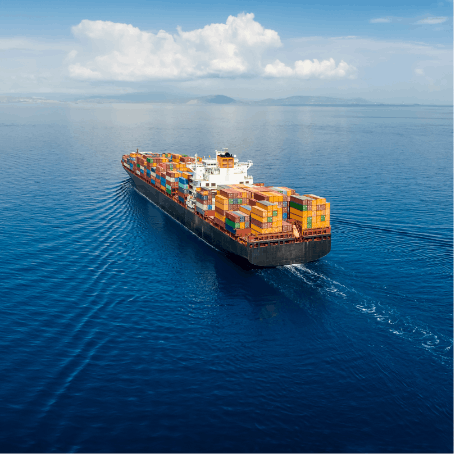In light of our mission to move the container shipping industry forward, DCSA is often asked to make predictions about how soon we might see the fruits of our labours. When will there be meaningful progress in major initiatives like electronic documentation, secure exchange of IoT data, or just-in-time port calls?
This kind of forecasting would naturally be much easier if any one part of the industry could make progress on its own, but that’s not the case here. International trade is highly complex, and without the support of customers, container carriers and trade regulators, any cross-border initiative is going to struggle to get off the ground. It must be a team effort. Which is why DCSA is so focused on mindset, aligning as many parts of the industry as possible around non-competitive practices, and building the momentum that’s required to drive investment and deliver real change.COVID as a wakeup call for collaboration around digitalisation
The COVID-19 pandemic has been a major catalyst for driving change, encouraging regulators, sometimes at a rapid pace, to accept digital documentation because it eliminates the dependence on paper documents arriving on time for cargo release. DCSA is delighted to see countries like the UK, Singapore, India and Japan leading the pack in recognising the legitimacy of digital documents. Through our eDocumentation initiative, we’re working on standardising and digitising end-to-end documentation, starting with the electronic bill of lading (eBL), to make it easier for more regulators to approve standardised digital shipping documents.Even though it may seem slow to change an established industry like container shipping, we, along with our member carriers, are committed to driving digital transformation in collaboration with all industry stakeholders. And much progress has been made during the pandemic. Beyond the increasing acceptance of eBL globally, customers of container shipping lines can now use one standardised API to get track and trace information from at least five carriers, instead of multiple proprietary EDI connections. But this is just the tip of the iceberg, because we, and the industry as a whole, must aim much higher.Standards-driven innovation will create a better customer experience
To answer those who regularly ask us what the shipping industry will look like in five years’ time, here are our top five predictions:Progress on customer experience – Five years may not be enough time to get us to the point where booking a container shipment is as easy as booking a flight, but we believe significant strides will be made for shippers in this timeframe. They will enjoy increased visibility of the status of their cargo with proactive notifications of delays and a dramatic reduction in manual effort around booking, tracking and documentation.More interoperability – We will see an increasing number of technology platforms emerging that have been built on standards that enable interoperability. Within five years we believe we’ll see digital bills of lading being exchanged automatically between platforms via APIs.The smart container tipping point – Smart containers are already emerging, but the vast investment required means we’re unlikely to see them become the majority within a five-year timeframe. However, by 2026 we may well have reached the point where the benefits of smart containers are clear to all industry participants, including regulators and customs bodies. DCSA predicts a broader reliance on smart container data will mean an increasing volume of cargo will be able to clear customs when it departs its port of origin, reducing friction on arrival.A focus on sustainability – Environmental factors are coming increasingly to the fore around the world. A growing number of shippers are now looking closely at the sustainability of their supply chains and demanding their suppliers be carbon-neutral in the coming decades, by as early as 2050. DCSA expects sustainability to become an important driver of digitalisation in its own right, as it enables carriers to optimise operations in ways that increase sustainability—from eliminating paper documents, to reducing carbon emissions with just-in-time port calls, to optimising onboard cargo capacity. Shipping the maximum amount of cargo per tonne of CO2 emitted will help achieve the sustainability goals customers demand while reducing costs.Accelerated innovation – DCSA is particularly hopeful about the impact of our standards on innovation. Right now, the fragmentation of technology platforms across the supply chain makes any kind of innovation both expensive and risky. The digital standards we’ve released to date are setting a foundation that will lower the barrier to entry for businesses who want to introduce innovative, futureproof solutions that will transform the industry for the better.Energising an industry that’s ripe for change
Despite the predictions of disruption, it’s important to remember that the shipping industry is no stranger to change. While we may lag behind airlines and banking when it comes to digitalisation, we need only look back 10 or 20 years to see how far shipping has come. Two decades ago, when the average vessel carried 6,000 containers, who would have dreamed we’d now be looking at ships that can handle over 20,000?Our industry is, rightly, a long way from the famous Facebook attitude of “move fast and break things”, but we’ve got to be willing to risk making a few mistakes on our way to success. We need carriers, ports, terminals, technology vendors, shippers and freight forwarders to adopt DCSA standards, give them a try and provide feedback to make them better. Only then can we iterate and develop improved APIs for track and trace or revised standards for the electronic bill of lading.The key is persistence, and a constant commitment to improvement. That’s how we will achieve meaningful progress in the next five years and beyond.
Digitalise the container shipping industry
At DCSA, we envisage a digitally interconnected container shipping industry in which customers have a choice of seamless, easy-to-use services that provide the flexibility to meet their business and sustainability goals.





